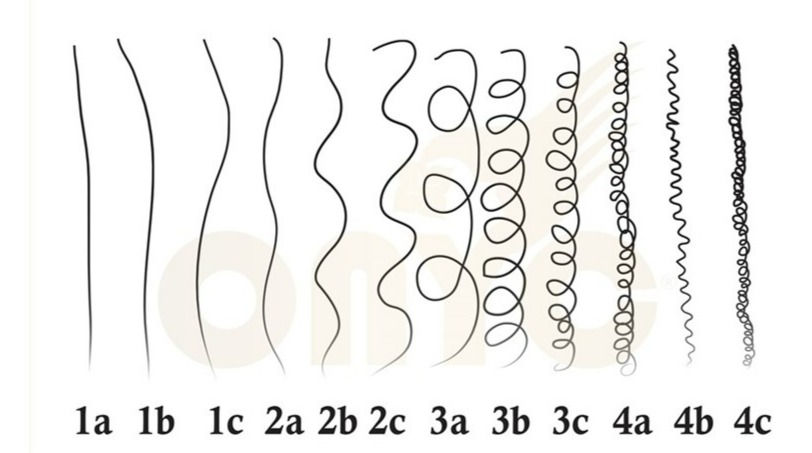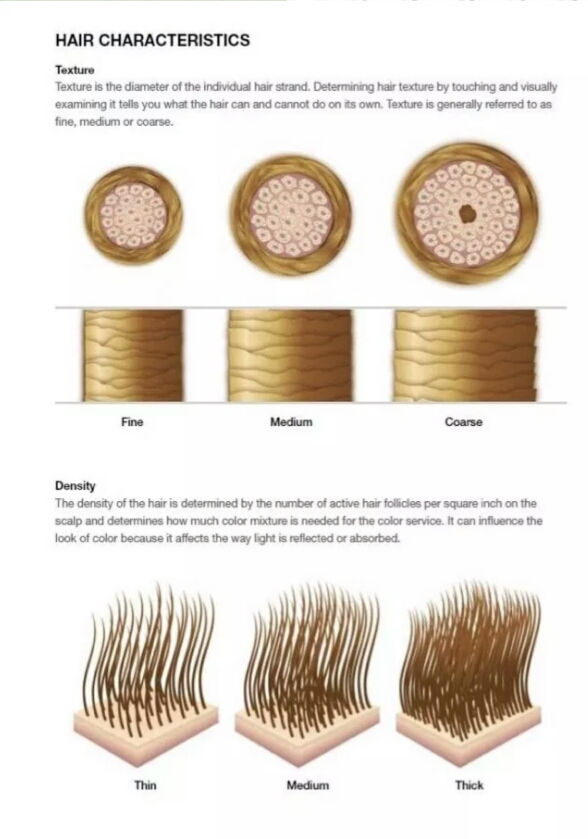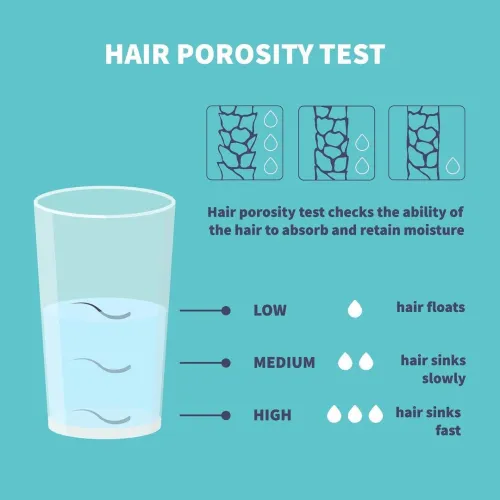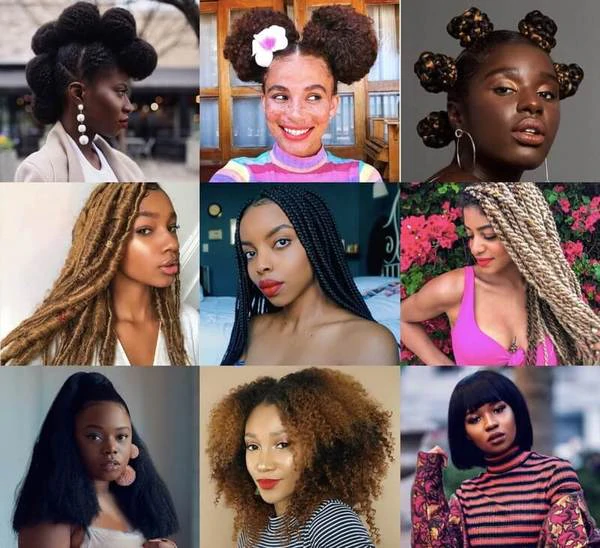General Hair Education
- Mar 17, 2022
- 7 min read
Updated: Jan 30
Hello and welcome back to Locs Talk, where I talk about all things Locs and Loose-Natural Hair. This week, I am going to cover a number of topics that affect both the Locs and Loose-Natural communities. I hope thus far, my blogs have been informative and has helped you to maintain a healthier and happier Hair and Loc Journey. Knowledge of your crown is crucial for a healthy journey.
Hair Type
So, let's begin this Locs Talk session talking about hair types which includes texture, density, porosity, and curl pattern. In the black community, I have found there to be a pattern of assumption that we all have a 4C hair type. It isn't just from conversation and lack of education about hair texture, but also observed more commonly in advertisement of Loose-Natural hair care products that focuses a lot around 4C hair type.

There are 4 things that determine your hair type, texture, curl pattern, porosity and density. As seen in this illustration of hair types, there is a total of 12 different hair types, ranging from a 1A (straighter) to a 4C (tightest curl pattern). Hair texture and curl pattern are often misunderstood as being the same thing, but it is not. There are 3 types of hair textures, fine texture, which on has two layers including the cuticle and cortex, regular texture and coarse texture, which has three layers including the cuticle, cortex, and medulla. The cuticle is the outermost layer of the hair strand made of flattened cells that overlap like scales, it protects the hair shaft from damage. Next there is the cortex, this is the middle layer and contains 90% of the hair's weight. Last is the innermost layer, the medulla. The medulla is composed of round cells mostly found in thick average hair and course hair. the curl pattern focuses on the tightness of the curls, that tends to change with the texture of your hair. This is why it can be confusing and misunderstood. Look at the chart and see the visual difference of curl patterns from one level to the next. This chart above illustrates more of a visual for the curl pattern than the texture.

The illustration you see here on the right illustrates the texture more accurately. So, as you can see here in the illustration, the first would be fine hair texture and you see the outermost layer (cuticle) and the cells in the middle (cortex) only, as the texture gets thicker, you will notice the center (medulla) changes and increases in size. This layer is usually found in thick hair and coarse hair.
The third layer of your hair type is the density of your hair. Hair density refers to how many strands of hair grow per square inch of your scalp. Hair density is one factor that determines how to style your hair, and no, it won't be necessary to count strands. Often times, density and texture can be misconstrued as well. Texture focuses more on the size and thickness of each strand while density focuses much on the number of strands growing per square inch.
Now, finding out your hair type accurately, would be best determined by a hair professional. But it can be done independently with research and understanding how it's done. Some have found that fully understanding texture and curl pattern is the most challenging part. You will need to add moisture to your hair to test your curl pattern. To test your hair for curl pattern, your hair must be moist to be accurate, and it is also best done when the hair has been thoroughly cleansed. My hair texture for example is regular, but I have two different curl patterns and thickness. My hair type is a 3B at the top and the Rim of my head its regular or medium texture and medium density with a coil curl pattern, typically, the area of my head where I would wear a crown. Beneath the rim (the sides) and the Nape (back of the neck area) are a 3C, a slightly thicker texture and tighter curl pattern than the 3B. Because of my hair type, it took my Locs more time to Loc than say, someone with a coarser texture and tighter curl pattern.

Moving into the final layer of your hair type is knowing the porosity. First and foremost, what is hair porosity? Hair porosity is your hair's ability to absorb and retain moisture. Now, let's look at how to test your hair porosity. Refer to the illustration on the left, as I explain. You will need a glass of water and some of your hair from a comb or brush (no need to cut off your hair). This test is known as the float test. Like I noted with curl pattern, make sure your hair has been cleansed before conducting this test to get a more accurate result. Put the hair into the glass of water and let it sit in the upwards of about 2 minutes. If the hair continues to float, you have Low Porosity hair. If the hair sinks slowly and hasn't reached the bottom, you have Normal or Medium Porosity hair. If it has sunken quickly and to the bottom of the glass, you have High Porosity hair. So, let's go over what each one means.
1. Low Porosity hair has lightly bound cuticle layers that lay flat. This type of hair is usually considered healthy and is often very shiny, especially in darker hair. It repels moisture and is harder to process with chemicals due to the resistance to its penetration. Lighter liquid-based products are best to use on Low Porosity hair to avoid buildup.
2. Normal or Medium Porosity hair often requires the least amount of maintenance. The cuticle layer is looser, allowing just the right amount of moisture to enter while preventing too much from escaping. It's also the easiest to process with color and other chemical agents.
3. High Porosity hair is usually an inherent property of hair or the result of damage from chemical processing. The cuticles are wide open and lets in entirely too much moisture and cannot retain moisture well, which is why it is important to increase moisture routine as to keep up with moisture that is loss. Also, with high porosity hair, your moisture routine should include an oil sealant to assist with retaining and locking in moisture.
My hair porosity is Normal aka Medium, making my hair type: 3A/B and Medium Porosity (3A/B;M-poro) as I would note it in my personally coded shorthand notes.
Tension and Tensile Stress
Moving forward, I would like to talk about the effects of too much tension caused by pulling hair. Pulling hair too tightly does not take a lot of effort. Pulling hair tightly can affect Locs by twisting tightly and too often, interlocking tightly, buildup that leaves the Locs feeling weighed, and from styling tightly. Pulling hair tightly, affect Loose-Natural hair as a result from braiding tightly, tight sew-in weaves, weave and wig glue pulling the hair, and tight slick back ponytails. This can result in the hair breakage at the roots, which may result in splitting, hair weakness, follicle damage, receding hairline, permanent hair loss in patches and thinning. Braids and tightly styled Locs can cause tensile stress, because of the constant pulling and tugging on the hair follicles. Tensile strength is the maximum stress the hair can withstand before it breaks. So, with too much stress from pulling the hair tight will continuously decrease the tensile strength of your hair, and it will eventually break.
Protective Styling

Speaking of braids, many refer to braids as a protective style, which it is, when it is not done too tightly and your ends are healthy. So, let's close this blog out with a little talk about protective styles. What is a protective style and what is its purpose? A protective style is any style that keeps the ends of the hair tucked away and protected, which minimizes manipulation to the ends of your hair. The purpose of a protective style is to tuck away and protect the ends and to give your hair a break from styling and manipulation. There is a large array of protective styles to choose from, such as braids (plaits), twist, wigs, weaves, simple ponytail with a wrap bun, crochet braids, and Faux Locs pronounced (Fo-locks) to name a few. The standard healthy length of time for a protective style to stay in, is 6 to 8 weeks. After 6 to 8 weeks, if you decide to continue with protective styles, it is highly recommended to remove the current style, give your hair at least a week to rest after your take it out, and then reinstall another style.
Remember to use some of these healthy tips, while wearing a protective style:
Don't use heavy dense creams, gels or oils.
Wrap your hair at night when you sleep, particularly a satin scarf or bonnet to help retain moisture.
Stick with the standard length of time of 6 to 8 weeks, not any longer as to risk damage to your hair.
Take your time when you take it out and use a conditioner to help break up dirt and properly detangle.
Don't rush to get it redone, give your hair time to rest and restore itself (at least a week).
Don't repeat styles that are causing damage to your hair when wearing.
Clip damaged ends after takedown to maintain healthy hair.
Whether you are Loose-Natural, Loc'd or wearing a protective style, take care of your crown on a daily basis and it will take care of you. Here are some healthy haircare tips and Made for Locs products that can help you achieve a healthy haircare regimen.
Daily Moisture can be provided with Peculiar Roots Refresher spray, Aloe Refresher and Aloe Gel.
Wash and Condition with Care. Made for Locs has a wonderful array of shampoos, shampoo bars, conditioners and conditioning bars to help you care for your crown and keep it nice and clean.
Do a monthly deep conditioner replenish and maintain moisture to your roots and to your hair.
Decrease the heat when drying your hair as to avoid heat damage and dehydration. Go natural with a wash and go every now and then.
Use light weigh conditioning oil on the scalp, every 3 days to keep the scalp oiled and healthy and a small amount daily on the hair to seal in the moisture. Made for Locs Conditioning oil and Hair growth Serum is great for this.
Avoid twisting, braiding and styling too tightly.
Stay up on educating yourself about your crown.
Your crown is a part of you, and it is important to protect and take care of it, just as you would take care of your physical health. From using the right amount of product to accommodate your hair's needs, to protecting it from stress, breakage or hair loss. Remember to take care of your crown and it will take care of you. Thank you for joining me this week for another session of Locs Talk where I talk about all things Locs and Loose-Natural hair. Until next week, take care of your crown and have a happy and healthy hair journey.
Pammie





![Locs Talk Live with Pammie
[The Significance of Products & How to Properly Use Them]](https://static.wixstatic.com/media/325997_a32fad765f1c4254a625bf7f664b7627~mv2.png/v1/fill/w_980,h_784,al_c,q_90,usm_0.66_1.00_0.01,enc_avif,quality_auto/325997_a32fad765f1c4254a625bf7f664b7627~mv2.png)
![Locs Talk Live with Pammie
[Live Q & A with visual recorded demonstration tutorials]](https://static.wixstatic.com/media/325997_3dcc6c49dca34c3e80f2b2ce7598df80~mv2.png/v1/fill/w_980,h_784,al_c,q_90,usm_0.66_1.00_0.01,enc_avif,quality_auto/325997_3dcc6c49dca34c3e80f2b2ce7598df80~mv2.png)
Comments